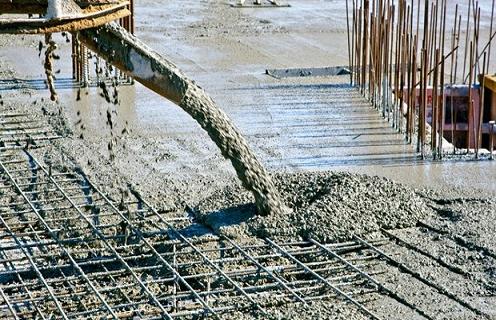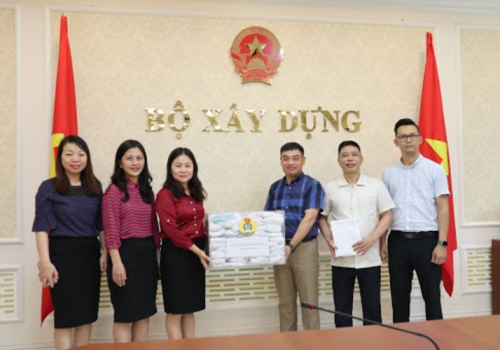Concrete and concrete classification
Concrete is an artificial stone material obtained by molding and solidifying a mixture of binders, water, aggregate (sand, gravel or crushed stone) and additives. The composition of the concrete mixture must ensure that after a solid time, it must achieve the given properties such as intensity, waterproofing ...
Adhesives can be cement of all kinds, plaster, lime and also organic binders (polymers).
In concrete, aggregate cement usually accounts for 80 - 85%, while cement accounts for 10 - 20% by weight.
Concrete and reinforced concrete are widely used in construction because they have the following advantages: High tensile strength, can make concrete types with different strengths, shapes and properties. The price is cheap, quite stable and stable for rain, sun, temperature, humidity. poor heat (λ = 1.05-1.5kCal / m.0C.h), weak corrosion resistance.
A mixture of new kneading materials is called a mixture of concrete or fresh concrete, commercial concrete.
Concrete mixture after hardening, turning into a rocky state is called concrete
In concrete, aggregates act as bearing frames. Adhesives are encapsulated around aggregates, which are lubricants, while simultaneously filling the gaps and bonding of aggregates. After hardening, the binder glues together aggregate particles into a relatively homogeneous mass and is called concrete. Reinforced concrete is called reinforced concrete.
Concrete is a brittle material, high compressive strength, low tensile strength (only equal to 10 1 15 1 - compressive strength). To overcome this disadvantage, it is often put in reinforcement to enhance the tensile strength of concrete in bending, tensile structures. This type of concrete is called reinforced concrete. Because concrete and reinforcement have good adhesion forces, have approximately the same coefficient of thermal expansion, they can work simultaneously. If the steel reinforcement is protected against rust, it will join with concrete to create a material with a long life. Reinforcing placed in concrete can be in normal state, or in a state of prestress (post-tensioning).

Classification of concrete
In the form of binders separated:
Cement concrete, silicate concrete (lime binder), plaster concrete, mixed binder concrete, polymer concrete, concrete using special adhesives.
Because the volume of concrete volume varies widely, their porosity also varies significantly, such as honeycomb concrete for insulation with r = 70 - 85%, hydraulic concrete r = 8 - ten%.
According to its use:
Concrete is often used in reinforced concrete structures (foundations, columns, beams, floors).
Hydroelectric concrete, used to build dams, locks, canals, water works ...
Concrete used for road surface, airport, pavement.
Concrete is used for the covering structure (usually lightweight concrete).
Concrete has special uses such as heat-resistant, acid-resistant concrete and radiation-proof concrete.
Within the scope of the program, we mainly study heavy concrete using cement binders.
According to the aggregated form:
Solid aggregate concrete, hollow aggregate concrete, special aggregate concrete (radiation-proof, heat-resistant, acid-resistant).
According to the volume of volume divided:
Special heavy concrete (ρv> 2500kg / m3), made of special aggregate, used for special structures.
Heavy concrete (ρv = 2200 - 2500 kg / m3), made from sand, stone and gravel normally used for load-bearing structures.
Relatively heavy concrete (ρv = 1800 - 2200 kg / m3), used primarily for load-bearing structures.
Lightweight concrete (ρv = 500 - 1800 kg / m3), including hollow reinforced concrete (artificial or natural), honeycomb concrete (aerated and foam concrete), made from a mixture binder, water, finely ground silicon and hollow filler, and large cavity concrete (no small aggregate).
Particularly lightweight concrete is also a kind of porous concrete and hollow aggregate concrete but has ρv <500 kg / m3.
VLXD.org (TH)
Facing increasingly complicated developments of the Covid-19 epidemic, the socio-economic situation of the country, including Thai Nguyen, was strongly impacted.
On April 7, 2020 at the Ministry of Construction, Deputy Minister of Construction Nguyen Van Sinh, member of the Steering Committee of Project 896, attended the meeting to review the implementation of the Project 2019.
Facing the complicated movements of the acute respiratory disease epidemic caused by the new strain of Corona virus (COVID-19) recently, responding to the call









